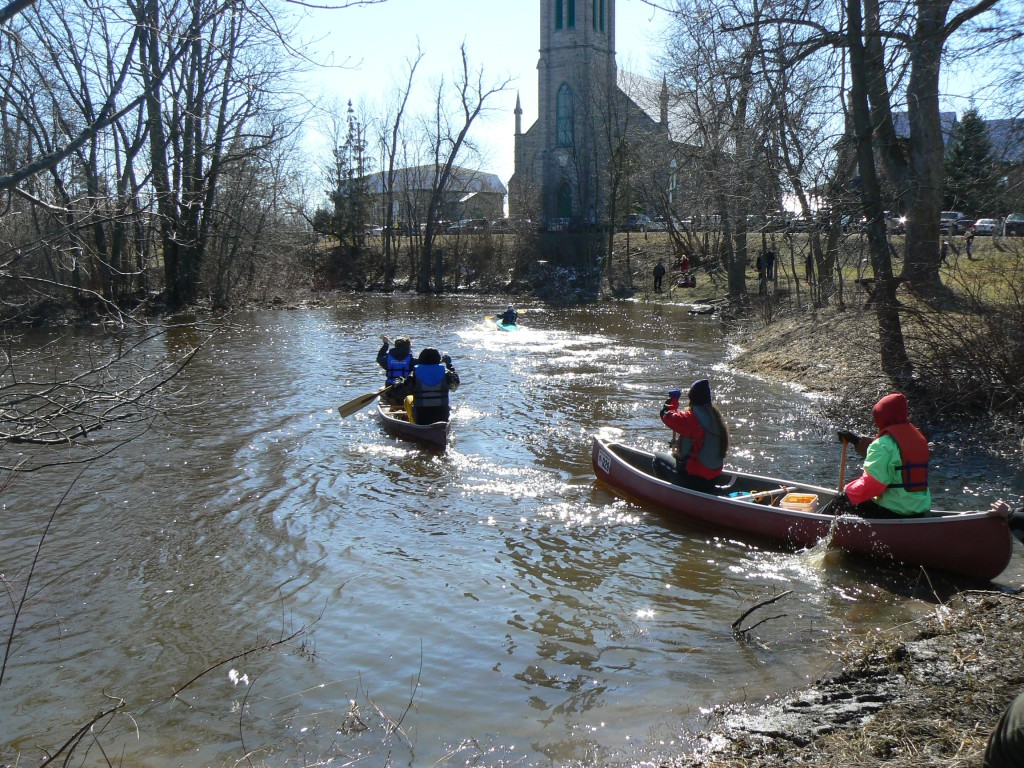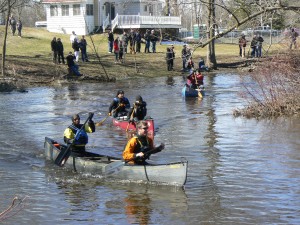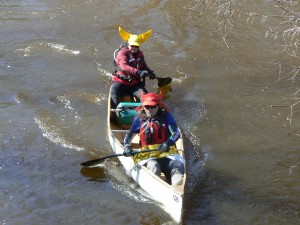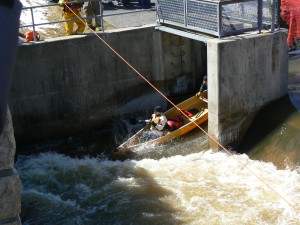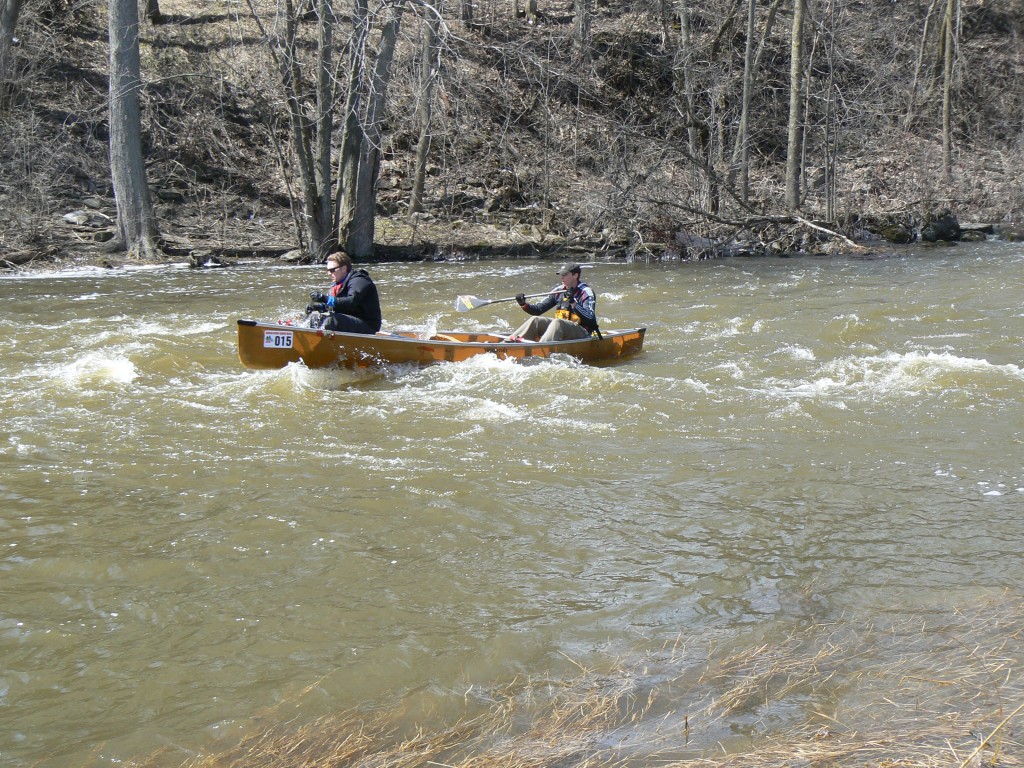Eastern Ontario’s Raisin River Canoe Race
They were rollin’ on the Raisin. The 43rd Annual Raisin River Canoe Race took place on April 10. The Raisin River begins in eastern Ontario north of Cornwall and meanders its way to the St. Lawrence River, east of the city. It is the longest canoe race in eastern Ontario at 30 kilometers/19 miles and goes east from St. Andrews to Williamstown. It is presented by the Raisin Region Conservation Authority, the local agency responsible for water and land conservation in the river’s watershed. The authority is hoping to use some of the proceeds for a public education project about walleye spawning.
Race Co-organizer Lissa Deslandes said about 175 canoes and kayaks were entered in this year’s race. The St. Andrews school yard was a giant marshaling area of kayaks and canoes—some sleek and new, others showing evidence of many a rough voyage.
Deslandes noted that according to the conservation authority’s stream flow gauges, the water flow for race day was higher this year at 20,000 liters/5,283 US gallons per second. Last year, it was 8,000 liters/2,113 US gallons. “It’s going to be fun,” said Chris Anderson, who had traveled from near Ottawa with his friends Justin and Brad Hossack, a pair of cousins, to compete in the race.
The start of the race was staggered. Each canoe was assigned a number and an official called it out when it was that team’s turn to launch.
The riverbanks and villages along the race route had a festival atmosphere. Rural roads were lined with parked cars and spectators. In the backyards of waterfront properties, families and neighbors were assembled in lawn chairs, many sitting by campfires for warmth while watching the canoes pass by.
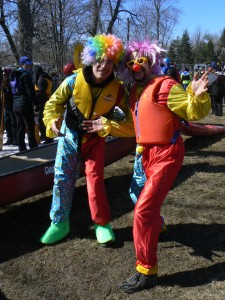
Canoe crazy: Shane from Alexandria, Ontario and Tyrone from Cornwall decided to clown around. Photo by James Morgan
The small village of Martintown, at roughly the halfway point, was crowded. Hundreds of people lined the streets, riverbanks, and the bridge. The big attraction there was paddlers who had the option of shooting the dam and rapids below, although many chose to portage. Martintown is where the going often gets rough for racers and canoes or kayaks start to tip.
The crowds cheered those who stayed afloat. They let out sympathetic sighs whenever a craft capsized.
The conditions on the Raisin River vary from mild to moderate rapids to deep, flat water. The race is always held during the spring runoff so there is enough water for canoes and kayaks to get downstream. The first canoe across the finish line in Williamstown was #15, the team of Adam Woolfrey from Tweed, and Scott Reynolds of Madoc, two villages in Hastings County, Ontario. Each competitor on the top teams to complete the race gets a medal.
The Raisin River Canoe race is a lot of fun for both competitors and spectators. It’s a great way to increase awareness of environmental conservation too. There’s also a strong historical element. Early French-speaking settlers noticed a lot of wild grapevines growing along the riverbanks. The French word for grape is raisin, and so the river became known as the Raisin River. The canoe and kayak were important vessels in the exploration and settlement of Canada too.
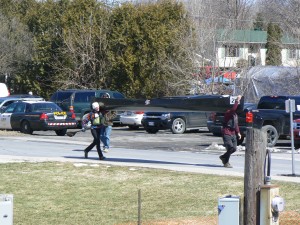
Not everyone chooses to shoot the Martintown Dam. Joanna Faloon and Gaetan Plourde made a quick portage down the street. Faloon and Plourde were second to cross the finish line. Photo by James Morgan
St. Andrews, where the race begins, is where explorer Simon Fraser is buried. Born in Hoosick, New York in 1776, he was the first European to discover a navigable route from the Rockies to the Pacific Ocean in 1793. He did it by canoe and the route he found—the Fraser River, is named after him. One row over at the St. Andrews Cemetery, John Sandfield Macdonald, Ontario’s first Premier, is buried. Williamstown was the home of colonial leader, Sir John Johnson. It seems fitting that a race using historic symbols like canoes and kayaks travels past the homes and graves of prominent people in Canada’s history.
Tags: canada, canoes, conservation, history, kayaks, Ontario, outdoor recreation, Raisin River





